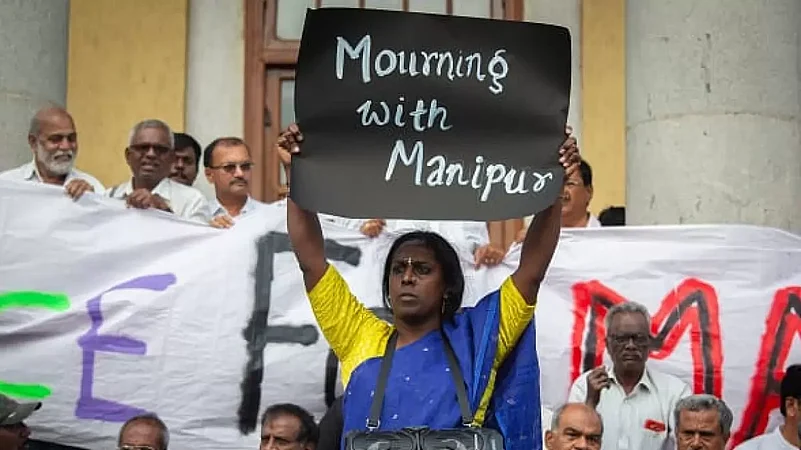Exactly four months ago, Manipur went into a state of turmoil. What started as a protest march by the Kuki-Zo tribes-led Indigenous Tribal Leaders' Forum (ITLF) against the Meitei community seeking a Scheduled Tribe (ST) status, turned into a full-blown war between the ethnic groups.
Manipur had witnessed sporadic incidents of unrest even weeks before May, triggered by a high court order asking the government to facilitate the Meitei community’s request. In April, Chief Minister Biren Singh's visit to Churachandpur district was marred by a 12-hour total shutdown called by tribal groups in protest of the evictions from villages. A gym that the chief minister was scheduled to inaugurate was set on fire. However, what happened after the May 3 protest march was unprecedented.
Guns, grenades and stone-pelting have taken over the region’s peaceful communities as police and protesters continue to clash with each other. Many houses, places of worship and other properties have been burnt and destroyed. On July 19, a video went viral showing two Kuki women, one in her forties and another in her twenties, paraded naked on the streets, slapped and sexually assaulted by presumably Meitei men.
The government has declared internet blackouts, imposed curfews in riot-hit districts including Imphal West, Kakching, Thoubal, Jiribam, Bishnupur, Churachandpur, Kangpokpi, and Tengnoupal, and gave ‘shoot at sight’ orders to curtail the situation. Centre sent additional forces subsequently to keep the law and order in place.
However, as of September, Manipur remains extremely divided on ethnic lines. According to media reports, nearly all Kuki-Zo families in the Meitei-dominated valley have been removed from their houses in forced evictions and displaced to the tribal hill districts. More than 160 people have been killed. There appears to be no truce in sight.
Last month, a fact-finding team of the Editors’ Guild of India visited the region to unearth the discrepancies in media reportage of the ethnic violence. The team in its report found that the State and media were “playing a partisan role” in the coverage of the conflict. Today, the Manipur government filed an FIR against the three members of the team – Seema Guha, Bharat Bhushan and Sanjay Kapoor – and EGI president Seema Mustafa for “trying to create more clashes” in the state. As per the complaint, the Guild’s report was “false, fabricated” and “sponsored by Kuki militants”.
A similar step was taken by the Imphal Police in July against a fact-finding team comprising of Annie Raja and Nisha Siddhu, associated with the National Federation of Indian Women, and Delhi-based lawyer Deeksha Dwivedi who had reported that the ongoing violence in the northeastern state was “state-sponsored”.
Chief Minister N Biren Singh, who has been accused of inaction by activists and opposition parties, said last month that because there are “too many civil society organisations” who speak in different voices, it becomes difficult to find a solution to the ethnic problem rocking the state.
“We are at a very crucial stage now. Both the central and the state governments are confused about whom to talk to. We will go with the public (opinion) and never work against the interests of the people,” Singh had said.
Singh warned the members of the Editors Guild today to steer clear of misreporting facts. “...meeting some sections only and coming to a conclusion is highly condemnable,” he said.
The question that arises: Will media now face greater scrutiny in its reportage of the events in Manipur in view of the latest case on the Editors’ Guild’s report or can press freedom prevail?
















